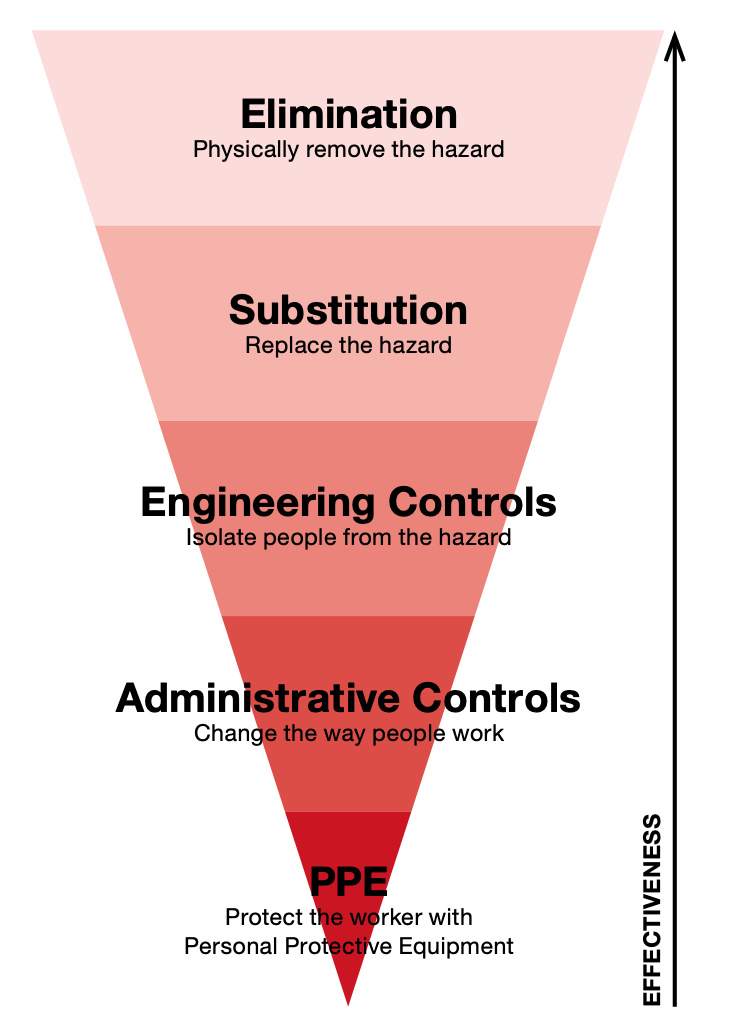Environment, Health & Safety (EHS)
Our employees are the most critical asset of our organization and are the reason we are able to maintain a strong connection with our customers. In the same way these individuals use their talents and innovative thinking to foster positive outcomes with our products and relationships, they bring creativity and problem-solving skills to the table when working toward the goals of our Twentyby30 program. It is our duty to not only safeguard their safety, health and well- being at all times, but to always look for ways we can improve our workforce environments and enhance comfort and trust in our facilities.
Bettering Our Workplace Conditions
Creating the right workplace environment stems from fostering awareness and training with our employees. Health and safety requirements are integrated into every process, procedure and system of the Company. We also work to instill the right proactive mindsets with each employee at all levels of the organization, from senior leadership to plant professionals.
Committing to a safe workplace environment also means aiming for zero work-related injuries. To work toward that target, we continually review, evaluate and invest in improving our processes, procedures, technology and training programs. This includes supplementing our use of industry-standard indicators—such as Recordable Case Rates—with more forward-looking indicators such as employee engagement in safety, near-miss investigations and hazard recognition.
Our Total Safety Culture supports each employee and extends beyond basic requirements to achieve safety excellence. We empower employees to practice careful observation, maintain a positive and proactive behavior and attitude and uncover opportunities to implement stronger work practices. We also encourage continuous discussion around safety issues with peers, with the goal of informing decision-making, correcting unsafe behaviors and reducing incidents, injuries and near-misses.
Our approach to workplace health and safety includes multiple programs and procedures:
- Supporting every Crown location through our Environment, Health and Safety (EHS) organizations—including manufacturing plants, corporate offices, Research & Development facilities and Centers of Excellence—in meeting or exceeding regulatory requirements and Company standards; focusing on safety training, increasing safety awareness, safety audits, healthcare and more
- Activating our SAFE (Safety Awareness For Employees) behavioral observation program, resulting in thousands of peer- to-peer safety observations
- Auditing each Crown site to identify and correct potential environmental or safety hazards and liabilities, helping to ensure continuous improvement and tracking corrective actions through an online platform
- Holding safety workshops for both salaried and hourly employees at every Crown location
- Mandating a job hazard analysis at each site for every significant task, developing safe job procedures and reviewing every new process and purchase against a safety checklist
- Setting strict safety requirements for contractors and third- party vendors who work with Crown
- Implementing a program to monitor contractor safety, which includes training and operating guidelines for contractor safety management
- Providing ergonomic training to reduce and eliminate musculoskeletal disorders
- Implementing an accident/injury investigation system, including near-misses, that examines root causes and identifies potential short- and long-term corrective actions
- Ensuring all plants have and follow emergency action plans
Hazard Management
Identifying and minimizing potential risks in the workplace is a particularly critical part of our commitments to maintain safety across our various plant locations. It is through a comprehensive management system that we are able to operate with confidence and reassure employees that we are prioritizing their well-being.
As part of this monitoring process, regular hazard recognition training is conducted at our plants, which includes education on proper structure and protocol for our hierarchy of controls. The identification and correction of any noted hazards is also managed at the plant level, with any hazards reported through the Company’s health & safety management software. Corrective actions are tracked and shared across the division.
To identify hazards, many of our teams conduct Risk Assessments (RAs) or Job Hazard Analyses (JHAs) that cover all aspects of each operating procedure. These assessments consider all hazards identified by the team and include accompanying controls for each potential hazard. If an opportunity for improvement is identified, the assessment is not considered complete until new controls have been implemented. In the event of an incident, RAs/ JHAs are considered as part of the investigation process, with the Company’s health and safety management software recording all details and overseeing case progression. Investigations for recordable incidents are supported by central H&S management and corrective actions are challenged if they are not determined to be as elevated in the hierarchy as possible. Improvements and actions are shared across all sites in quarterly reviews or with safety alerts if particularly serious.
The RA process is managed by the plant EHS Coordinator, who in some regions may hold a National Examination Board in Occupational Safety and Health (NEBOSH) Diploma or equivalent qualification. This individual helps to combine competent risk assessment work with competent persons in the area to ensure all hazards and controls are suitably identified. Through this regular oversight, our teams are able to implement improvements in controls, as well as introduce or improve Safe Systems of Work.
We are aiming to facilitate more active engagement from employees to better encourage compliance. In Europe, for example, we are planning to launch near-miss and hazard reporting campaigns in 2023, which will offer rewards rather than reprisals. We are also continuing induction and refresher EHS training in various areas, which helps employees to understand how to raise alarm and initiate an Emergency Response Team for imminent danger. Each division of the Company conducts internal audits and maintains various certifications. For example, every Crown beverage plant in The United States, Canada and EMEA undergoes Sedex Members Ethical Trade Audit (SMETA) audits under Sedex, which include private interviews with random staff samples and should trigger major non-conformance if any reprisals are reported. The Company maintains positive scores for these processes across all plants where these are conducted.
Hierarchy of Controls
In alignment with this management structure, our organization maintains a specific safety hierarchy of controls:
